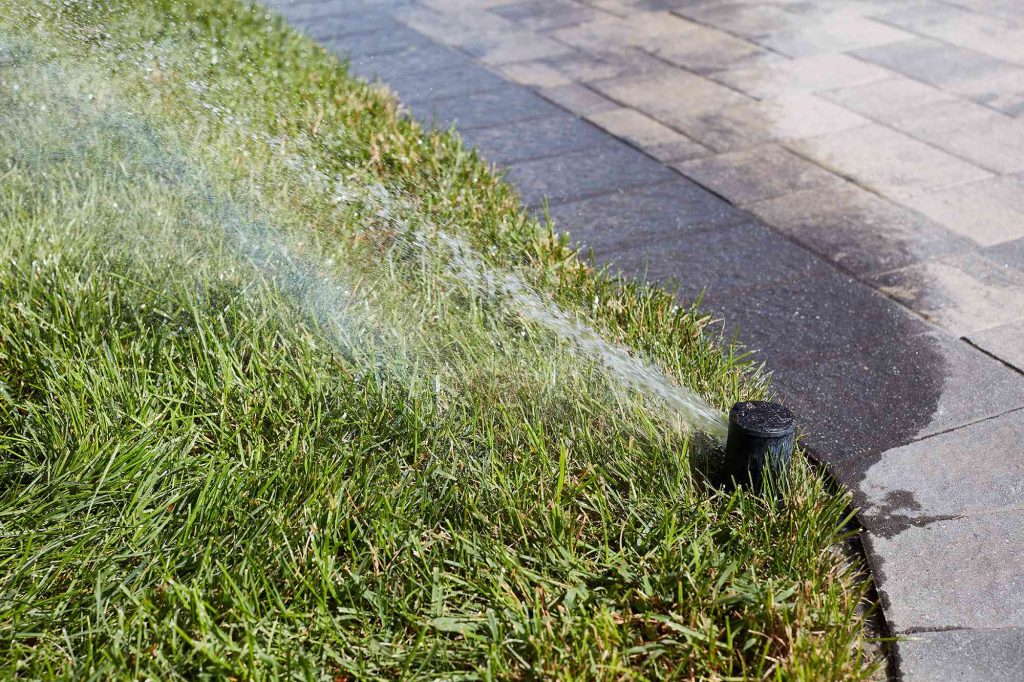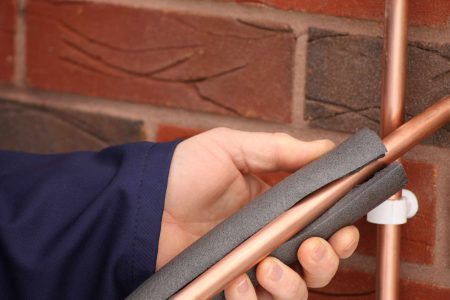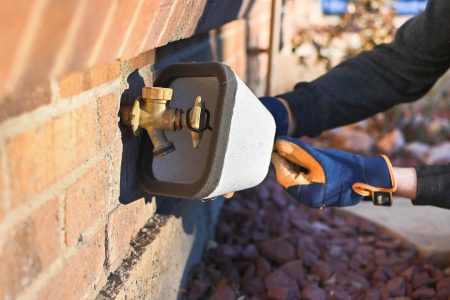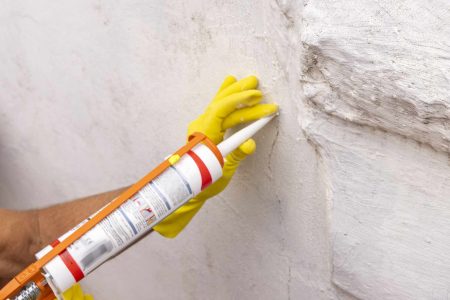A stop-and-waste valve is a key irrigation fitting that helps keeps sprinkler lines from freezing in the winter. Many people have an automatic stop-and-waste valve serving as the main shut-off valve for their sprinkler system. The stop-and-waste valve is turned on and off with a meter key. When it is in the off position, it automatically drains any water in the line. When the water is shut off at the end of the season, all water in the lines drains away, thereby eliminating the possibility of lines bursting from freezing water.
A stop-and-waste valve has a lifespan and it will eventually fail. Unfortunately, if the water in the irrigation line does not drain away, you may not find out until the pipes are frozen. Water remaining in the lines when the water is turned off can mean the auto-drain in the stop-and-waste valve is not working properly or is clogged. Another reason to replace a stop-and-waste valve is when it leaks.
What You’ll Need
Equipment / Tools
- Shovel
- Pipe cutter or hacksaw
- Plumber’s tape
- Tongue-and-groove pliers
- PVC solvent glue
- 1/2-inch gravel
Materials
- New stop-and-waste valve
- MIP fitting (with slip outlet and male-threaded outlet)
- PVC pipe, as needed
- PVC 90-degree elbows and unions, as needed
Instructions
Warning
Shut off the water supply to the irrigation system before beginning work. If you don’t have a shutoff valve for the system itself, shut off the water to the house, then bleed as much water as possible from the line by opening a nearby hose bib.
-
Dig to Expose the Valve
Dig out the soil around the irrigation pipes to expose the stop-and-waste valve. Be very careful not to damage the pipes; use only a hand shovel, not power equipment. A stop-and-waste valve is usually installed below the frost line—the depth to which the ground freezes in winter. This can be quite deep in cold climates. Make the hole wide enough to provide plenty of working room.
-
Evaluate the Materials Needed
Examine the stop-and-waste valve, and make a list of all the parts you’ll need to replace the valve. In this example, we are raising the valve up by about 6 inches, so we are using two 90-degree elbows, two PVC MIP adapters, and short lengths of PVC pipe. Each MIP adapter has threads on one end for attaching to the brass valve body, and a slip fitting on the other end for solvent-gluing to the PVC water line.
-
Remove the Old Valve
Make the necessary cuts to remove the old valve, using a pipe cutter or hacksaw. You might be able to cut the pipe on one side of the stop-and-waste valve and unscrew the old valve from the other side. In our example, because we are raising the stop-and-waste valve slightly, we are simply cutting out the entire fitting to start fresh.
-
Attach the MIP Adapters
Apply plumber’s tape to the threaded end of each MIP adapter, then screw each adapter into one end of the new stop-and-waste valve, and tighten it with tongue-and-groove pliers. Hold the valve in position to determine any other pipes and fittings you’ll need to complete the project. Dry-fit the pipes and fittings to make sure everything fits properly.
-
Glue the New Valve Into Place
Glue all of the PVC parts in the assembly, using solvent glue. Glue the joints one at a time, leaving the joint with the most movement for last to facilitate assembly. Make sure the arrow on the stop-and-waste valve points in the right direction, indicating the flow of water from the source outward to the end of the irrigation line.
Let the solvent glue cure fully, as directed by the manufacturer.
-
Cover the New Valve
Cover the bottom of the hole with 1/2-inch gravel up to the level of the stop-and-waste valve. The gravel promotes drainage and helps prevent the valve’s drain from getting clogged with soil.
Turn on the water to the system and check all of the joints for leaks.
Backfill the rest of the hole with soil, carefully tamping it around the pipes as you go.
Read the full article here









